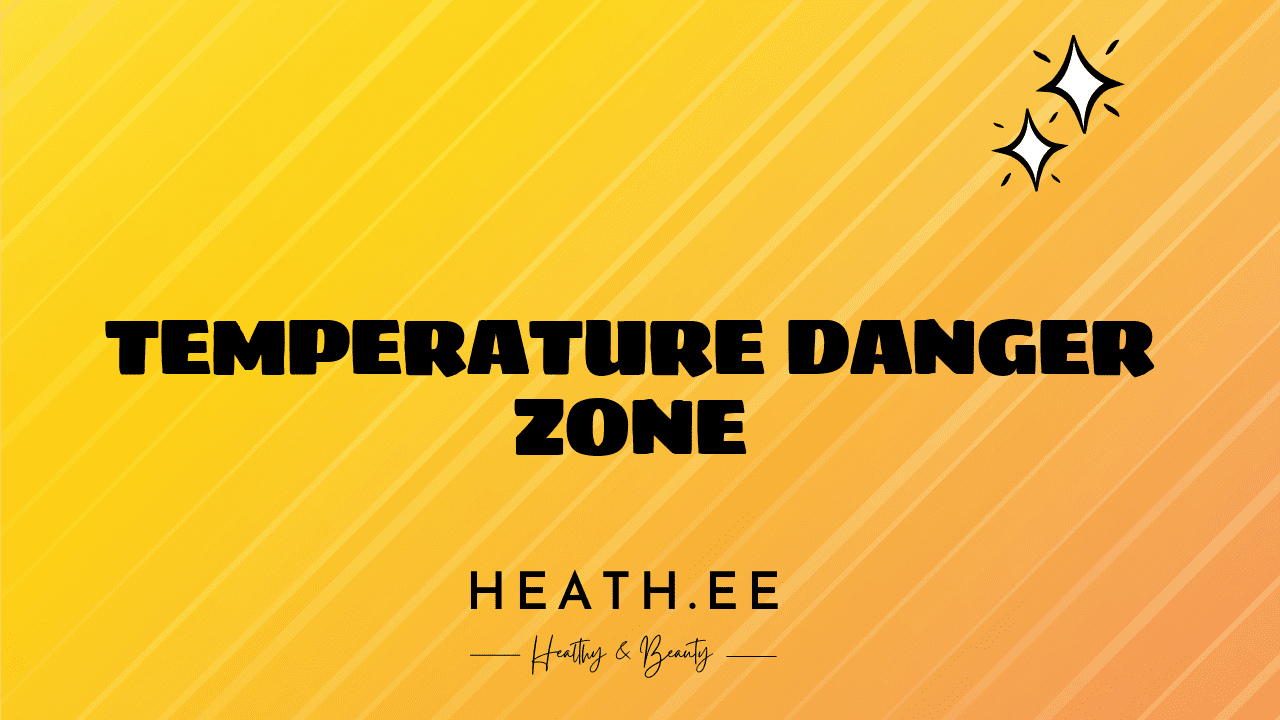Food safety is an essential part of maintaining a healthy lifestyle and avoiding food-borne illnesses. It is important to understand the temperature danger zone, which is the range of temperatures between 40°F and 140°F (4.4°C and 60°C) in which bacteria can grow rapidly. This blog post will provide an overview of the temperature danger zone and how to keep food safe by avoiding it.
What is the Temperature Danger Zone?
The temperature danger zone is the range of temperatures between 40°F and 140°F (4.4°C and 60°C) in which bacteria can grow rapidly. This range is considered the most dangerous for food safety, as bacteria can double in number in as little as 20 minutes when food is in this range. Bacteria in this range can cause food-borne illnesses, such as salmonella, E. coli, and listeria.
It is important to note that the temperature danger zone is not the only temperature range that can cause food-borne illnesses. Bacteria can grow at temperatures below 40°F (4.4°C) and above 140°F (60°C). However, the temperature danger zone is the most dangerous range for food safety, as bacteria can double in number in as little as 20 minutes when food is in this range.

How to Avoid the Temperature Danger Zone
The best way to avoid the temperature danger zone is to keep food at safe temperatures. The U.S. Food and Drug Administration (FDA) recommends keeping hot food hot (above 140°F or 60°C) and cold food cold (below 40°F or 4.4°C).
When cooking food, it is important to use a thermometer to ensure that food is cooked to a safe temperature. The FDA recommends cooking poultry to an internal temperature of 165°F (74°C). Ground beef and pork should be cooked to an internal temperature of 160°F (71°C), and fish should be cooked to an internal temperature of 145°F (63°C).
When storing food, it is important to use a food thermometer to ensure that food is stored at safe temperatures. The FDA recommends storing food at 40°F (4.4°C) or below. Refrigerators should be set to 40°F (4.4°C) or below, and freezers should be set to 0°F (-18°C) or below.
Monitoring Temperature
Monitoring temperatures is essential for food safety. It is important to check the temperature of food before, during, and after cooking. A food thermometer is the best way to check the internal temperature of food.
It is also important to monitor the temperature of food storage. Refrigerators and freezers should be set to the recommended temperatures (40°F or 4.4°C for refrigerators and 0°F or -18°C for freezers). Food thermometers can also be used to check the temperature of food storage.

Time and Temperature Control
Time and temperature control is an important part of food safety. It is important to monitor the time and temperature of food when it is being cooked, stored, and served.
When cooking food, it is important to cook food to a safe temperature. The FDA recommends cooking poultry to an internal temperature of 165°F (74°C), ground beef and pork to an internal temperature of 160°F (71°C), and fish to an internal temperature of 145°F (63°C).
When storing food, it is important to store food at safe temperatures. The FDA recommends storing food at 40°F (4.4°C) or below. Refrigerators should be set to 40°F (4.4°C) or below, and freezers should be set to 0°F (-18°C) or below.
When serving food, it is important to serve food at safe temperatures. Hot food should be served at 140°F (60°C) or above, and cold food should be served at 40°F (4.4°C) or below.
The Dangers of Cross-Contamination
Cross-contamination is the transfer of bacteria from one food to another. It is important to avoid cross-contamination to prevent food-borne illnesses.
The most common way to avoid cross-contamination is to keep raw food and cooked food separate. Raw food should be stored and cooked separately from cooked food. It is also important to use separate utensils, cutting boards, and dishes for raw and cooked food.
Cleaning and Sanitizing
Cleaning and sanitizing are essential for food safety. It is important to clean and sanitize all surfaces, utensils, and dishes that come in contact with food.
Cleaning is the process of removing food and dirt from surfaces, utensils, and dishes. It is important to use hot, soapy water and a clean cloth or sponge to clean all surfaces, utensils, and dishes.
Sanitizing is the process of killing bacteria on surfaces, utensils, and dishes. It is important to use a sanitizing solution to sanitize all surfaces, utensils, and dishes.
Food Safety Guidelines
The FDA has published guidelines for food safety. It is important to follow these guidelines to ensure food safety.
The FDA recommends keeping hot food hot (above 140°F or 60°C) and cold food cold (below 40°F or 4.4°C). It is also important to cook food to a safe temperature, store food at safe temperatures, and serve food at safe temperatures.
It is also important to avoid cross-contamination, clean and sanitize surfaces, utensils, and dishes, and follow the FDA’s food safety guidelines.
Conclusion
Understanding the temperature danger zone and how to avoid it is essential for food safety. It is important to keep hot food hot (above 140°F or 60°C) and cold food cold (below 40°F or 4.4°C). It is also important to cook food to a safe temperature, store food at safe temperatures, and serve food at safe temperatures.
It is also important to avoid cross-contamination, clean and sanitize surfaces, utensils, and dishes, and follow the FDA’s food safety guidelines. By following these guidelines, you can help ensure that food is safe to eat.



